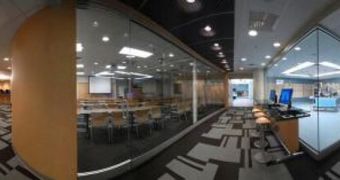A new scientific study has determined that using mannequins to guide would-be doctors when they learn how to use ultrasound imaging is highly effective, without risking the quality of healthcare provided to patients. The method should be used in a lot more settings than it's currently employed in, as it ensures better trained practitioners eventually make their way in clinics around the world. The study was compiled by experts at the Henry Ford Hospital.
“The mannequins allow us to simulate actual ultrasound guided procedures, which offers residents a unique training opportunity prior to working on real patients. Ultimately, the residents in our study became more proficient and efficient in performing these procedures,” HFU radiologist John W. Bonnett, MD, also a coauthor of a new paper detailing the idea, says. Another coauthor, Mishal Mendirata Lala, MD, will present the proposal and the research results in Chicago, at the 2009 annual meeting of the Radiological Society of North America (RSNA).
According to the HFU experts, practicing on dummies improves the knowledge, dexterity and confidence that future doctors have in their own skills, which could mean the difference between life and death for a patient lying on their operating table. Some of the most common procedures that involve ultrasound guiding include breast biopsies, liver biopsies, thyroid biopsies, as well as the removal of fluid accumulations in the body. Another plus of the new system is the fact that medical education could become standardized, ensuring compatibility between countries.
The research also showed that those attending the simulation courses in HFU's 12,000-square-foot Center for Simulation, Education and Research exhibited an increase in performance and confidence at the end of the six-month training course. The participants' skills were evaluated using written and practical exams both at the beginning and at the end of the course. The differences were impressive, HFU experts say, and they highlight the efficiency of training courses such as this one.

 14 DAY TRIAL //
14 DAY TRIAL //